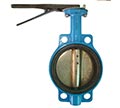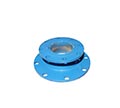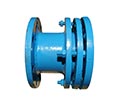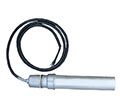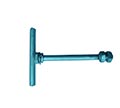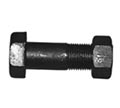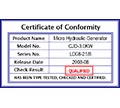Hydro power is typically associated with big rivers, bigger dams and huge reservoirs — not something the self-builder normally contemplates. But that does not have to be the case. Is hydro power a realistic solution for individual homes?
Micro hydro technology is available that lets the individual homeowner (with a stream) generate their own power. Consider this: a hydro turbine of just 500W will produce enough electricity through the year to meet the annual consumption of an energy-efficient home. You could pick up and carry a turbine that size with one hand.
The key question is: how big does the stream have to be? And in this the issues are ‘head’ – the vertical distance between the highest and lowest points of the stream – and ‘flow’ – the amount of water passing a point, measured in liters per second.
The calculation is: head x flow rate x gravity x 0.75 (which allows for system inefficiencies).
For example, a 5m head with a 14 liter per second flow rate will give:
5m x 14l/s x 9.81 x 0.75 = 515 watts of power.
A 500W turbine may not sound very big, but it runs 24 hours per day, 365 days per year. It will produce around 4,000kWh per year and a reasonably energy efficient house will use about 5,000kWh per year. A 1,000W turbine will produce as much as the most profligate user will need. We explore the issues below.
The Costs
The cost of a hydro power installation varies enormously from site to site. The biggest influence on price is the terrain — the size of the stream, its steepness, the landscape, trees, depth of soil and so on. To give an order of magnitude, a ‘typical’ 1kW system will cost something in the region of £10,000 to £20,000, but in reality there is no ‘typical’ site. The size of the generator (1kW, 2kW, etc) will only have a small effect on cost.
The installer will also be an issue and therein lies perhaps the biggest problem. In short, there is a shortage of supply. The bigger companies are not interested in projects of less than 5kW capacity – they can’t charge enough – and the small companies have so much work that some are booking projects two years in advance.
The problem is beginning to be addressed with training courses for potential installers springing up. It seems that it is finally being recognized that areas such as Wales, Scotland, and the Peak and Lake Districts have excellent potential for small, low-cost hydro systems.
Grid Connection or Battery Storage?
Although a 1kW turbine will produce almost twice as much electricity as will be used over the year, it will not produce enough at any one time to even boil a kettle. The maximum output is 1kW and a kettle could be 3kW. The answer is usually to either sell the excess electricity to the grid, and buy back what you need, or store it in batteries.
A battery bank will add to the capital cost: batteries need storage space, maintenance, have a shorter life than the turbine and present a disposal problem. So grid connection is generally the option taken. There is also a cost benefit to using the grid which legislation planned for 2009 will improve. The current position is that the local power company is keen to buy electricity from zero carbon sources. Scottish & Southern, for instance, are currently offering 18p/kWh for electricity from hydro installations, while they sell it back at around 14p/kWh. A 1kW turbine will produce around 8,000kWh per year (the average house will use about 5,000kWh per year). The electricity sold to the grid is worth £1,440 and the electricity bought costs £700. Next year’s legislation may mean that all generating companies will have to offer a similar price.
Using Streams
A stream, of any size, is an ecosystem to itself and it would be damaging, not to say unlawful, to divert all the water to a hydro turbine. The proportion of water that is safe to use will vary with the type and condition of the stream. In all cases the Environment Agency must be consulted as it will have the say as to what can and cannot be done. Hydro turbines do not introduce any pollutants, but it may be that your stream supports particularly sensitive fauna and you cannot take much or any water.
The Key Benefits of Hydro
• A very high efficiency (70-90%)— the best of all renewable technologies
• A high level of predictably, varying with annual rainfall patterns
• Hydro systems last for 50 years or so — much longer than comparable technologies
So Why Isn’t It More Popular?
So why are we not all doing it? Most obviously because we don’t all have a stream. Less obviously, because most people with a stream think that: a) it is not big enough or b) hydro power will be too expensive. Whether the stream is big enough or not can only be established with a site survey. That may cost £300 or £400 but could be a very worthwhile investment.
Is it too expensive? One way of looking at it is that a £20,000 investment in a 1kW turbine installation will fix the price of your electricity at around 8p/kWh for the next 30 years. In addition, you will add that value to your property, be immune to energy price fluctuations and save a whopping 103 tones of CO2.

